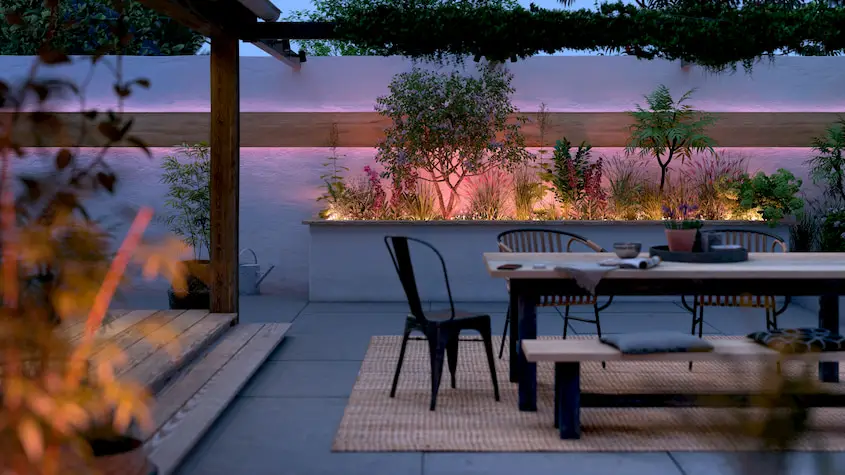
My wife and I love cooking together. Our idea of a good time is mixing ingredients, following (or ignoring) the recipe, and eating the delicious concoction after baking at 375 degrees for 40 minutes. The only real detractor has always been the dark and dreary wasteland under our cupboards that we call the “counter.”
Enter Philips Hue and their LightStrip Plus.

Install is a breeze, minus the part where I accidentally peeled both sides of the tape off the back of the strip. A few minutes of fussing and re-sticking had me back in business. You can make the strip shorter but cutting along the indicated markings.
Unfortunately, due to the myriad of uses for the light strip, and an unknowable proximity to outlets, Philips Hue has seen fit to equip their light strip with a very long (6-ish feet) power cord. It’s also about the same thickness as a Cat-5 network cable. With my outlet conveniently right below my mounting surface, I had to decide what to do with all this extra cable. It’s currently wire-stapled to the underside of my cabinet but it’s un-ideally visible and sticks out like a sore thumb.
The other item that sticks out like a DC fan at a Marvel convention is the AC power supply. I’m not sure why it’s so big; presumably it has something to do with the built-in Bluetooth as well as the transmitter for their add-on Smart Bridge. Unfortunately, it’s an eyesore that I’d rather not have sticking out of my wall, but – as with everything, you take the good with the bad – Philips Hue definitely offers more good than bad with their product.
Connectivity-wise you only need a phone with Bluetooth and their app to use the light strip in your home, but if you want full smart capabilities (like changing the lights while you’re at work) you’ll need to purchase their Smart Bridge separately.
I was able to connect it with my Echo (which does NOT have a built-in hub) and add voice controls using Alexa. Unfortunately, without the Smart Bridge, Echo cannot tell what type of device it is (it gets labeled as “other”) so your controls are limited. I can turn the lights on and off and change color, but I’m unable to adjust brightness or set routines.
Ultimately, whether or not you like the LightStrip Plus might have more to do with whether you have other Philips Hue products or not. For me, my house mostly runs on Kasa products, which cost about the same and don’t require a hub for full smart-capabilities.
My father-in-law recommended them to me early on in my smart home journey and I’ve never looked back. At this point, I can see why Philips Hue still makes you use a hub (in theory it’s easier on your Wi-Fi), but if you have a decent router, a few extra devices aren’t enough of a bandwidth drain to justify the extra cash spent on the hub.
That being said, once you own the hub, being able to pick up Hue products at Home Depot is handy – rather than waiting 2-3 days for delivery (or whatever Prime is doing now). In the end, like most smart home products, once you buy into a brand there’s probably not much reason to change. Philips Hue makes a great product, but they haven’t convinced me — yet.

Good website! I really love how it is simple on my eyes and the data are well written. I’m wondering how I could be notified when a new post has been made. I’ve subscribed to your RSS feed which must do the trick! Have a nice day!